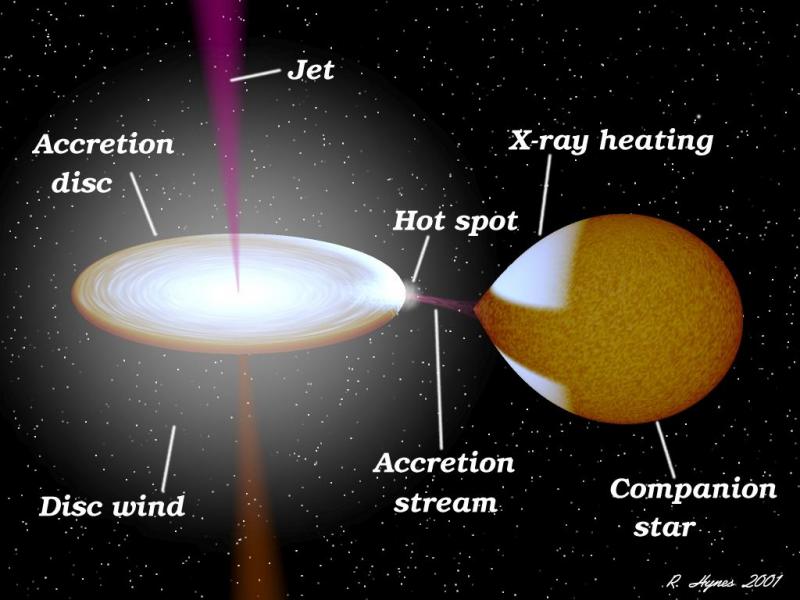The binary star system - SS433
Introduction
SS433 is a binary star system which consists of a massive, hot star
and a compact object (a small, dense object at the end of a starʼs
life, such as a neutron star or black hole), orbiting around a common
centre of mass. As material from the star falls towards this
compact object, an accretion disk forms. This disk radiates at a
variety of wavelengths, from the optical to the X-ray part of the electromagnetic spectrum<.
It canʼt handle all the material that flows from the companion star, so
it ejects most of the gas as jets of material at speeds of around
quarter the speed of light at right angles to the plane of the disc.
In this activity you will calculate the red and blue shifts of the
jets and work out how long it takes them to reach the edge of the
supernova remnant, W50.
Below are the documents which you will need to carry out this activity. The 'Spectra - Background Information' document explains what spectra are and how they are formed, and includes some questions to help cement your knowledge of this topic. The 'SS433 - Question sheet' document describes in more detail the observations of SS433 and its discovery, and leads you to calculating the redshifts of the jets of material which are ejected from the system. The Mpeg movie of SS433 shows how astronomers think the SS433 system behaves.
Documents
Spectra - Background Information (.pdf)<
Resources
Mpeg movie of SS433< (taken from <) (.mpg)
